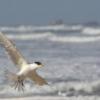-
Posts
9,495 -
Joined
-
Last visited
Content Type
Profiles
Forums
Gallery
Events
Everything posted by Jim Lad
-
Hello Jared, and a warm welcome to MSW from 'Down Under'. John
-
Hello, and a warm welcome to the forum from 'Down Under'. John
-
Hello Chris, and another warm welcome to the from from 'Down Under'. John
-

Hello from Texas Longhorn Country
Jim Lad replied to Glen McGuire's topic in New member Introductions
Glen, looking at the beast on the right of Derek's image, I doubt that it has a name like 'Sweet Eileen'! John -
Don't know of suppliers here who can provide pre-cut small timber, but two very good people if you can mill your own are Anagote of Marrickville and Trend Timbers out at McGraths Hill. The bloke at Anagote is a wood fanatic and unbelievably helpful if you catch him at a time when he's not too busy. Trend have the advantage of having a section where they sell offcuts and small pieces for wood turners. By the way, just for the curious; when they were setting up Anagote they were looking for a name and asked their kids what they should call the company. At the time they had a pet goat called Anna, so ......... John
-
G'day, and another warm welcome from Sydney. Are you in one of the "areas of concern" (LIKE ME) OR CAN YOU GET OUT A BIT? John
-
Hello Nick, and a warm welcome to the forum from 'Down Under'. John
-
Hello Bruce, and a warm welcome to the forum from 'Down Under'. John
-
A very interesting looking vessel. She'll make a fine model. John
- 105 replies
-

Portuguese Val Boat
Jim Lad replied to michael mott's topic in Building, Framing, Planking and plating a ships hull and deck
What a great video. Thanks very much for posting it, Michael. John -
Hello John, and a warm welcome to the forum from 'Down Under'. John
-
Hello, and a warm welcome to the forum from 'Down Under'. John
-

HMCSS Victoria 1855 by BANYAN - 1:72
Jim Lad replied to BANYAN's topic in - Build logs for subjects built 1851 - 1900
I think I'd be using appropriately coloured thread for the wire ropes, Pat. A mid grey might be about right. John- 1,006 replies
-
- gun dispatch vessel
- victoria
-
(and 2 more)
Tagged with:
-

New member from the North Atlantic
Jim Lad replied to Thukydides's topic in New member Introductions
Hello, and a warm welcome to the forum from 'Down Under'. if you're from the North Atlantic fishing grounds, I hope you're not getting too damp! John -

HMCSS Victoria 1855 by BANYAN - 1:72
Jim Lad replied to BANYAN's topic in - Build logs for subjects built 1851 - 1900
Very nice work, Pat. Are we going to see flags in that locker? John- 1,006 replies
-
- gun dispatch vessel
- victoria
-
(and 2 more)
Tagged with:
-
Excellent solution to your twisting problem. John
- 14 replies
-
- Osborn Models
- Sea Flea
-
(and 1 more)
Tagged with:
About us
Modelshipworld - Advancing Ship Modeling through Research
SSL Secured
Your security is important for us so this Website is SSL-Secured
NRG Mailing Address
Nautical Research Guild
237 South Lincoln Street
Westmont IL, 60559-1917
Model Ship World ® and the MSW logo are Registered Trademarks, and belong to the Nautical Research Guild (United States Patent and Trademark Office: No. 6,929,264 & No. 6,929,274, registered Dec. 20, 2022)
Helpful Links
About the NRG
If you enjoy building ship models that are historically accurate as well as beautiful, then The Nautical Research Guild (NRG) is just right for you.
The Guild is a non-profit educational organization whose mission is to “Advance Ship Modeling Through Research”. We provide support to our members in their efforts to raise the quality of their model ships.
The Nautical Research Guild has published our world-renowned quarterly magazine, The Nautical Research Journal, since 1955. The pages of the Journal are full of articles by accomplished ship modelers who show you how they create those exquisite details on their models, and by maritime historians who show you the correct details to build. The Journal is available in both print and digital editions. Go to the NRG web site (www.thenrg.org) to download a complimentary digital copy of the Journal. The NRG also publishes plan sets, books and compilations of back issues of the Journal and the former Ships in Scale and Model Ship Builder magazines.



